Why you can trust Tom's Hardware
Grayscale and Gamma Tracking
Our grayscale and gamma tests use Calman calibration software from Portrait Displays. We describe those our grayscale and gamma tests in detail here.
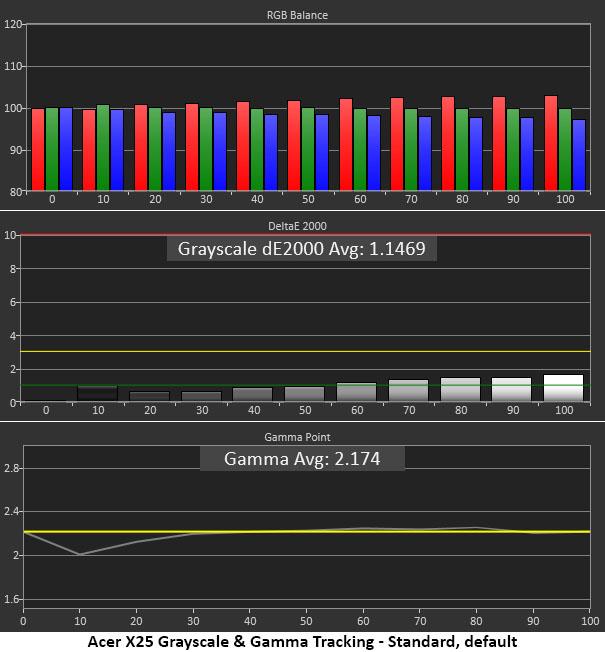
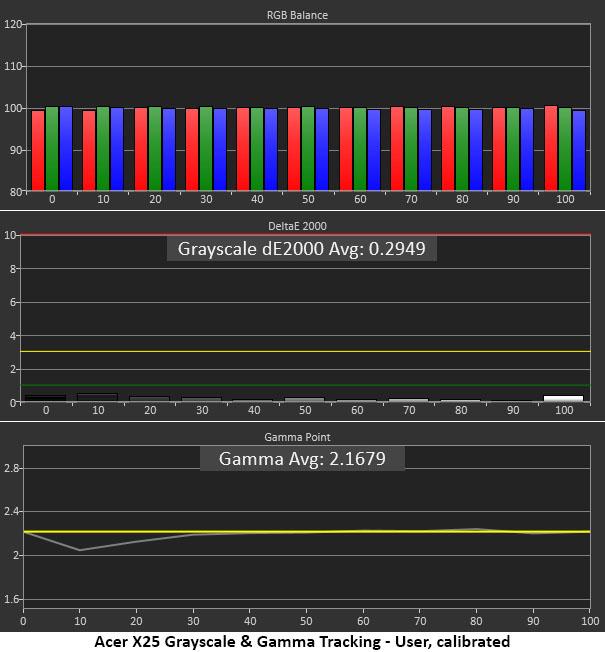
With all grayscale errors under 2 Delta E (dE), they should be invisible to the naked eye (3dE is the visible threshold). The first chart above shows a small dip in gamma at 10% brightness as the only flaw, and it’s a tiny one. Shadow detail is plainly visible, just not quite as dark as it should be.
Our calibration (second chart above) produced a very satisfying result, with almost no grayscale errors whatsoever. This is better than many professional screens. Our adjustments did not change gamma, however.
Comparisons
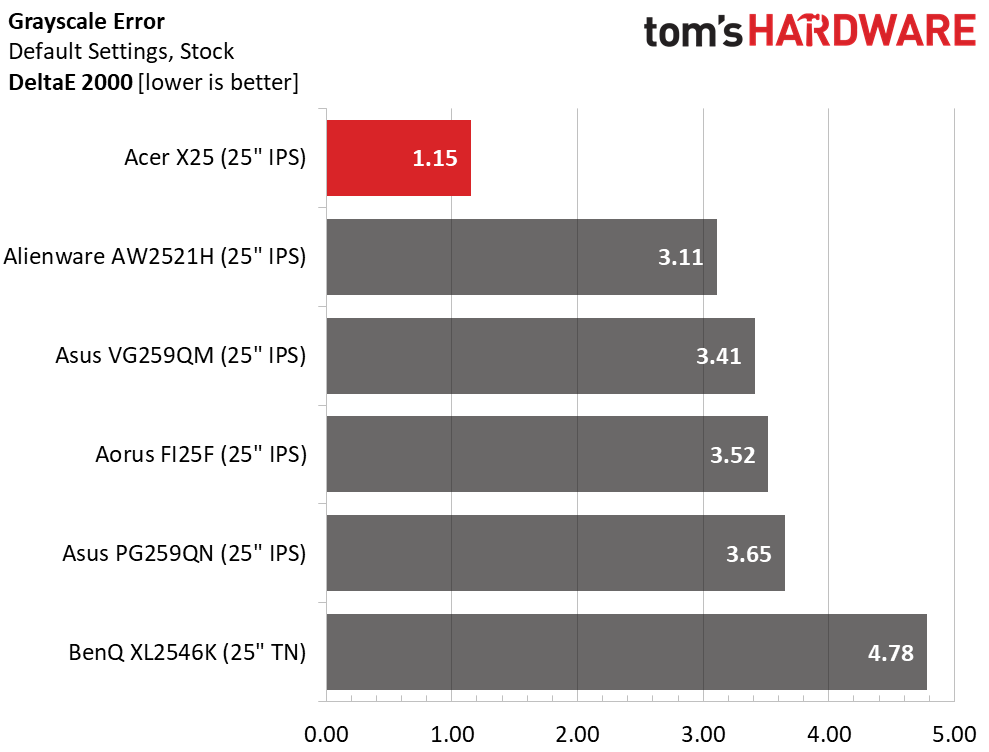
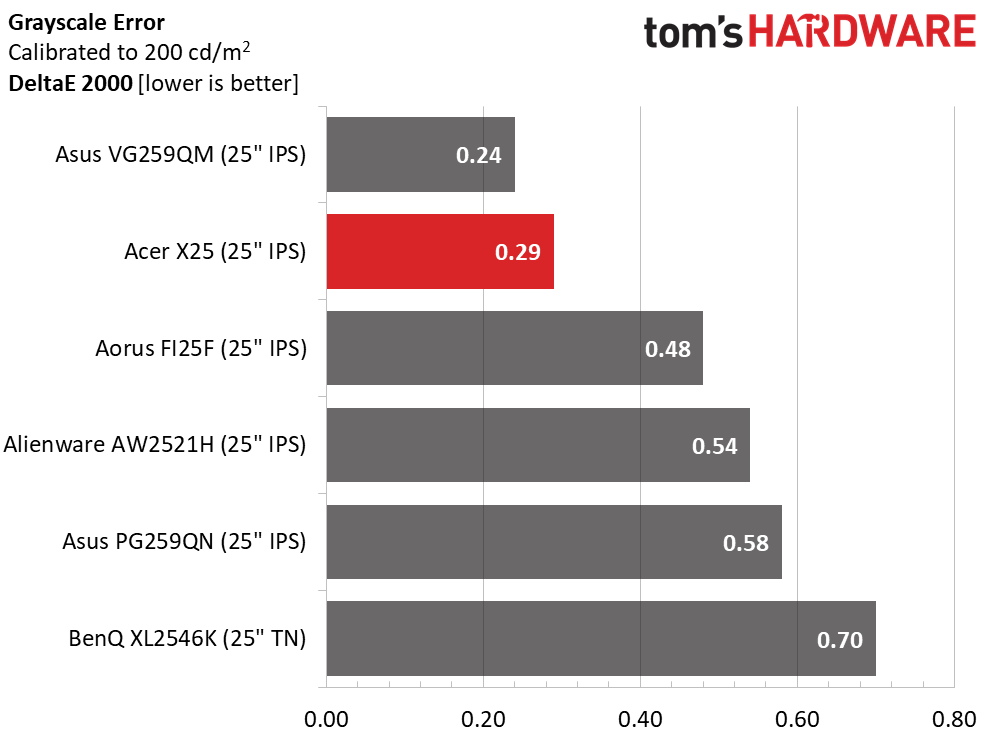
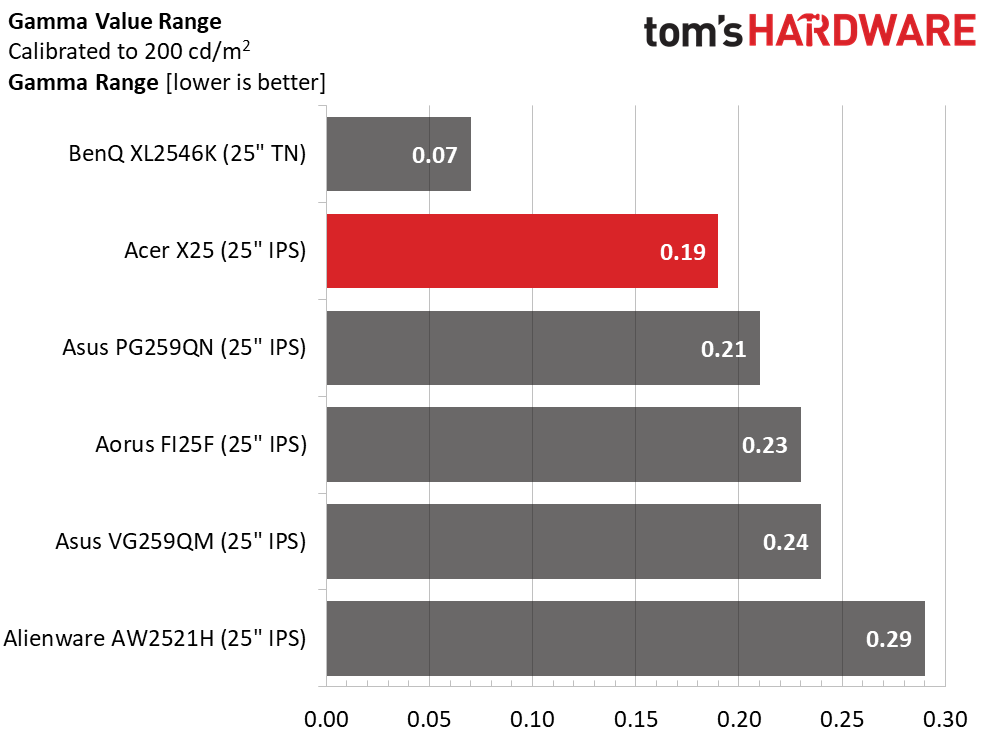
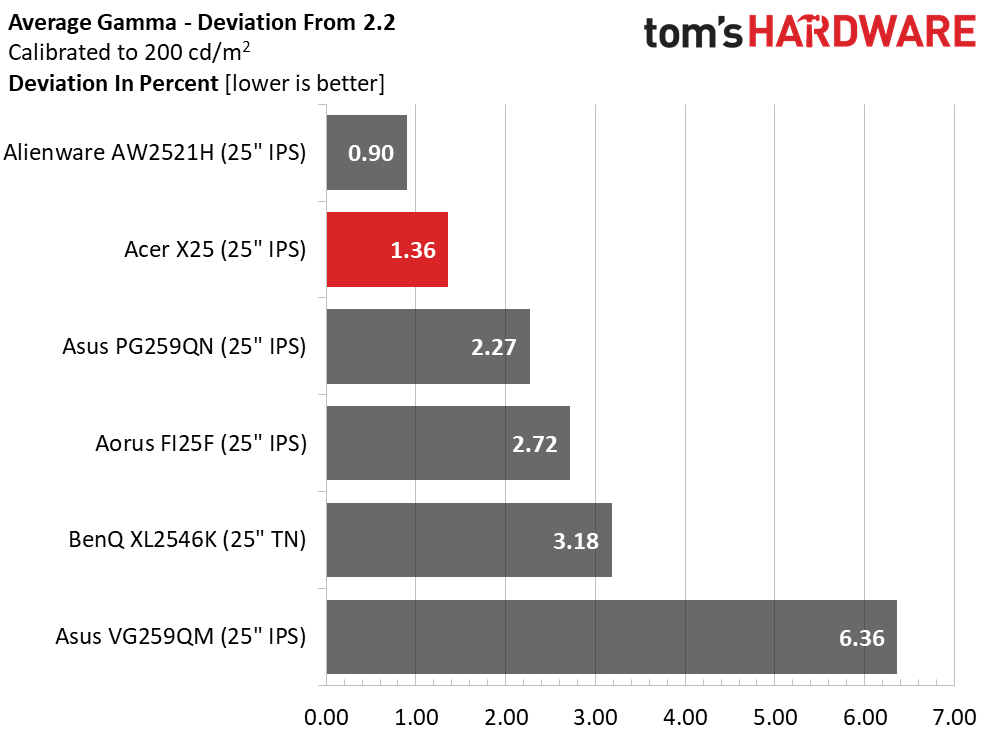
The X25 clearly has the advantage in out-of-box grayscale accuracy among our speedy comparison group. It’s well ahead of the curve with a tiny 1.15dE average error. Calibration takes that number to an impressively low 0.29dE. Only the VG259QM is more impressive at 0.24dE, but that is far from a visible difference. All the monitors here are very accurate with calibration.
The X25 is also near the top in gamma accuracy. If the dip at 10% brightness could be eliminated, it would win both tests. Still, the error is almost impossible to spot in real-world content. This is excellent performance, worthy of the X25’s premium status and price.
Color Gamut Accuracy
Our color gamut and volume testing use Portrait Displays’ Calman software. For details on our color gamut testing and volume calculations, click here.

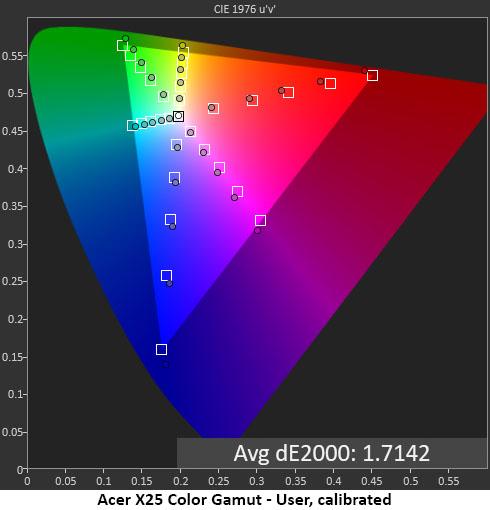
Color performance is no less impressive, with an invisible error of just 1.82dE out of the box. The X25 promises high accuracy and delivers on all counts. It’s unfortunate that it doesn’t support extended color, but none of the other 360 Hz monitors we’ve reviewed do either.
Get Tom's Hardware's best news and in-depth reviews, straight to your inbox.
Calibration (second chart above) makes only a tiny difference, and you’ll be hard-pressed to see it with the naked eye. But we say if you can make a small improvement, it’s worth the effort.
Comparisons
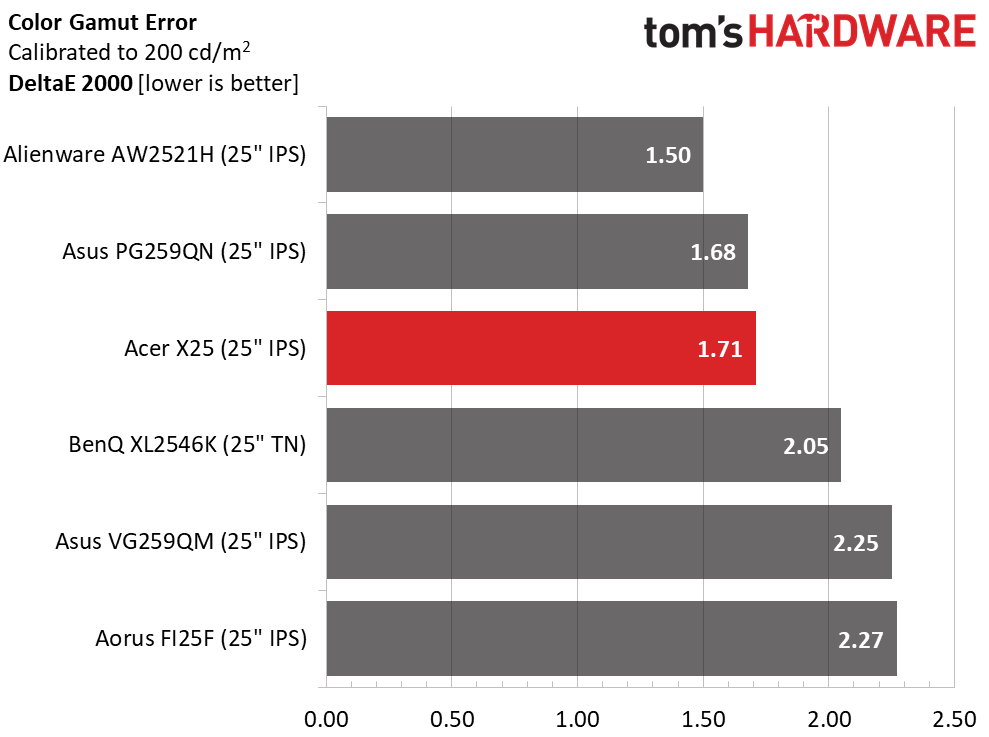
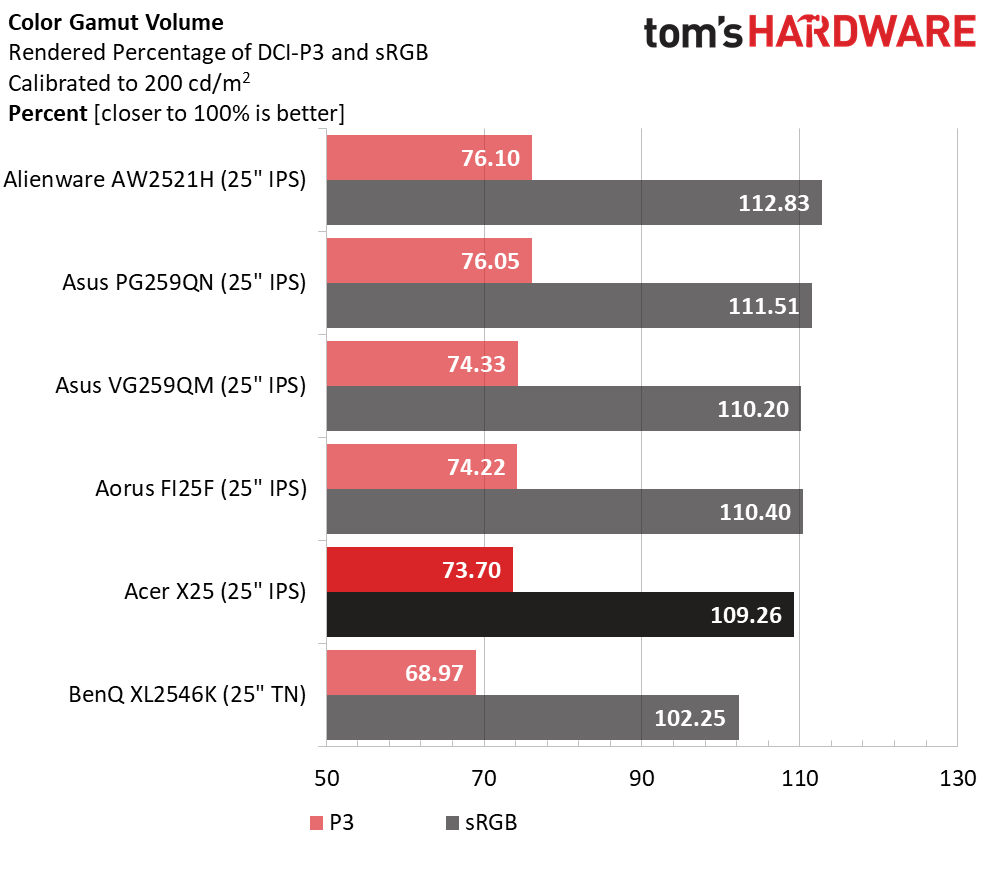
The X25 matches color gamut accuracy with the other two 360 Hz monitors. And the bottom three monitors have no visible color errors. The quest for speed will not require sacrificing image fidelity if you choose any of these screens.
You will have to sacrifice color volume though. All the monitors in the group are sRGB displays and do not support DCI-P3. Luckily, they all go over the 100% mark, which is great for those wanting a colorful display. The BenQ is the most strictly accurate of the bunch at 102.25%, but for gaming, a little extra saturation is welcome. The X25 provides a nice 109.26% coverage of sRGB.
Current page: Grayscale, Gamma and Color
Prev Page Brightness and Contrast Next Page HDR Performance
Christian Eberle is a Contributing Editor for Tom's Hardware US. He's a veteran reviewer of A/V equipment, specializing in monitors. Christian began his obsession with tech when he built his first PC in 1991, a 286 running DOS 3.0 at a blazing 12MHz. In 2006, he undertook training from the Imaging Science Foundation in video calibration and testing and thus started a passion for precise imaging that persists to this day. He is also a professional musician with a degree from the New England Conservatory as a classical bassoonist which he used to good effect as a performer with the West Point Army Band from 1987 to 2013. He enjoys watching movies and listening to high-end audio in his custom-built home theater and can be seen riding trails near his home on a race-ready ICE VTX recumbent trike. Christian enjoys the endless summer in Florida where he lives with his wife and Chihuahua and plays with orchestras around the state.
-
helper800 Reply
Almost all of the competitive esports titles easily hit 300+ with the right hardware and settings.escksu said:Not many games could hit 360fps even at 1080. -
helper800 Reply
You should check out the Viewsonic XG270QG I am almost 100% certain it uses the same panel. I also happen to own it and can verify that its awesome.clonazepam said:LG 27GP83B-B review on the way? I'm excited to read about this one. -
clonazepam Replyhelper800 said:You should check out the Viewsonic XG270QG I am almost 100% certain it uses the same panel. I also happen to own it and can verify that its awesome.
That one does look really nice, but doesn't seem to have display port 1.4 enabling HDR etc, not that HDR is a huge deal but I'm looking forward to solid review going over all the details like higher brightness / hdr capability etc -
helper800 Reply
Yeah, the only thing the XG270QG does not have is an HDR certification. It is listed as 350 nits brightness and seems to be around 300-400 with day to day use. No issues there for me.clonazepam said:That one does look really nice, but doesn't seem to have display port 1.4 enabling HDR etc, not that HDR is a huge deal but I'm looking forward to solid review going over all the details like higher brightness / hdr capability etc